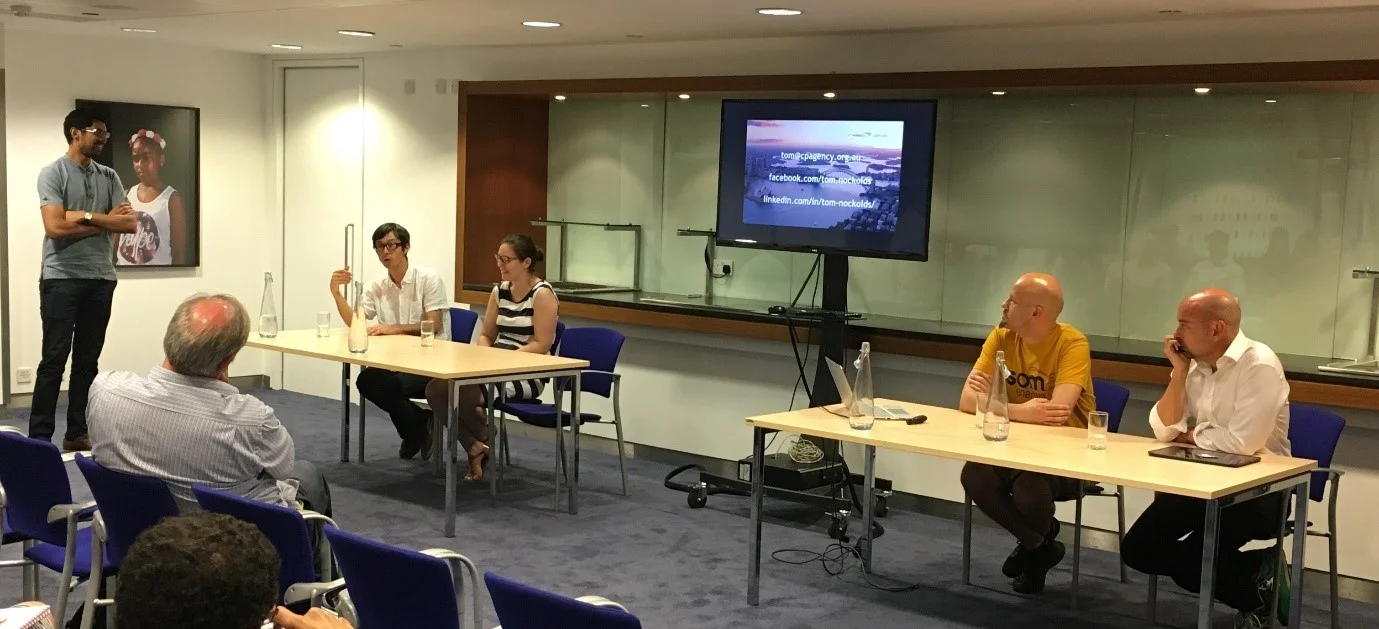This blog post was originally posted here on 13/7/2017
Leapfrog's most recent seminar explored lessons that UK Community Energy can take from other jurisdictions where there has been a withdrawal of government support or never was any support in the first place.
The event was kindly hosted by Simmons & Simmons and was supported by Scene and we had four speakers who informed, challenged and explored some of the possibilities from beyond the UK with us:
- Aoife O'Leary, Legal Officer, Pure Leapfrog
- Alex Schlicke, Co-Director, Scene
- Ero Lugilde, Member of the Governing Council, Som Energia (Spain)
- Tom Nockolds, Director, Community Power Agency (Australia)
Below are some of the highlights and you can access the presentations by clicking on the name of the speaker above.
The event brought together four speakers from across the globe.
We kicked off with Aoife from Pure Leapfrog laying out the current UK political context including an overview of the withdrawal of various forms of support for community energy over the past two years and the implications of Brexit for community energy policy. This presentation ended on a positive note, with Aoife suggesting that it is highly probable that the current planning restrictions for onshore wind will be removed as wind is just so cheap that the logic of using a cheap energy source should win out.
Alex of Scene then went on to highlight some of the really interesting work that is being done in Scotland. Perceived understanding of community energy groups is sometimes that that they lack experience, expertise, funding and are competing against commercial developers to develop projects. At the same time, due to their geographic ties, groups are unlikely to do more than one project. Despite these challenges, community energy groups are enthusiastic and dedicated, uniquely knowledgeable about the locality, able to mobilise support, take a rounded view (environmental, financial and social) and understand the wider carbon agenda. Alex also spoke about the importance of taking a systems approach – from the solar panels on the roof to batteries to electric cars, looking at an entire building’s (or island’s) energy needs can provide solutions otherwise not visible.
Ero from Som Energia really provided an uplift for the room by detailing the history of a cooperative supply company that now has 35,600 members after only 7 years of operation. They have 8 photovoltaic arrays, one hydro and one biogas plant which are all cooperative owned and managed. They have an expected turnover of €35 million in 2017. A common complaint from the community energy movement in Spain is that the government have capitulated in rubber stamping regulation proposed by large utilities which has created a regulatory framework favourable to big energy companies.
Finally we had Tom from the Australian Community Power Agency who gave us a mixed view. The Australian government has not been historically supportive of community energy projects, however, the potential for solar power in Australia is staggering. While some groups have managed to get several projects off the ground, many more groups have been plugging away for years trying to get something going, with many parallels to what groups have faced in the UK. But Tom ended on a hopeful note by identifying collaboration and cooperation between groups to share the lessons learned as the future for community energy in Australia.
We would like to thank all the speakers for giving such informative and insightful speeches and for making their presentations available. We would also like to thank everyone who attended for making it such an informative afternoon, we really got a great discussion going, especially around the potential for community energy supply in the UK.
We look forward to seeing you at our next event!





